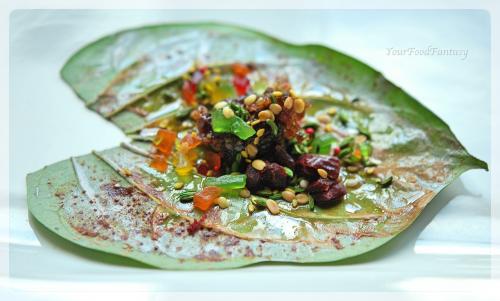The History And Cultural Significance Of Paan As A Mouth Freshener

About Paan(Mouth Freshner)
Paan is a traditional mouth freshener that has been popular in India for centuries. It is a simple concoction of betel leaves, areca nut, slaked lime, and various flavourings and spices, which are wrapped and chewed as a palate cleanser after meals. Paan has played a significant role in Indian society and culture for centuries, and its history and cultural significance are worth exploring.
History Of Paan In India
The origins of paan consumption in India can be traced back to the ancient Indian civilization of the Harappan culture. Archaeological evidence from the excavation sites of Harappan cities indicates the use of betel leaves for medicinal and ceremonial purposes. Betel leaves were also mentioned in ancient Sanskrit texts, such as the Atharva Veda and Charaka Samhita, as a medicinal herb with digestive and carminative properties.
Over time, the use of betel leaves evolved, and people began to add other ingredients such as areca nut and slaked lime to enhance the flavour and aroma. The practice of chewing paan became popular among the royals and the aristocracy, and it spread to other classes of society during the medieval period.
Cultural Significance Of Paan
Paan has played a significant role in Indian society and culture throughout history. In India, it is often offered as a gesture of hospitality and is an essential part of many religious and social events. Paan has a symbolic significance in Hindu mythology and is believed to be the favourite mouth freshener of Lord Shiva.
Paan is also associated with romanticism and has been a popular part of Indian cinema since its inception. Many Bollywood movies feature actors chewing paan, and the act of offering paan to someone is often portrayed as a romantic gesture.
In addition, paan is also associated with weddings and other important ceremonies. In many Indian weddings, the bride and groom exchange paan during the wedding ceremony as a symbol of their union. Paan is also offered to guests as a part of the traditional Indian wedding feast.
Health Benefits And Drawbacks Of Paan Consumption
Paan has many health benefits, primarily due to its digestive and carminative properties. It is believed to aid in digestion, improve appetite, and reduce bloating and flatulence. Paan is also considered to be a natural mouth freshener that can help combat bad breath.
However, paan consumption is not without its drawbacks. The primary health concern associated with paan is the use of tobacco and betel nuts. The prolonged use of tobacco and betel nuts can cause various health problems, including oral cancer, heart disease, and addiction. Therefore, it is essential to consume paan in moderation and avoid adding tobacco or betel nuts to the mixture.
Regional Variations Of Paan In India
Paan is available in many different varieties and flavours throughout India, each with its unique ingredients and taste. In North India, the most popular type of paan is the Banarasi paan, which is filled with a mixture of gulkand, saunf, and rose petals, and the maghai paan. In the southern parts of India, the Madrasi paan is more popular, which is filled with a mixture of coconut, cardamom, and rose petals.
Modern Adaptations Of Paan
Paan has evolved to adapt to changing tastes and preferences. Today, paan is available in many different varieties, including chocolate paan, ice cream paan, and even a paan-flavoured chewing gum.
One of the most popular modern adaptations of paan is the chocolate paan. It is made by filling the betel leaves with chocolate sauce and a variety of other sweet ingredients, such as desiccated coconut, raisins, and nuts. The chocolate paan has become a hit with younger generations and has become a new trend in the paan industry.
Another modern adaptation of paan is the ice cream paan. This version of paan is made by stuffing betel leaves with ice cream, flavoured syrups, and nuts. It is a unique twist on the traditional paan, and it has become quite popular in urban areas.
Conclusion
In conclusion, paan is an essential part of Indian culture and history. Its roots can be traced back to ancient times, and it has evolved to adapt to changing tastes and preferences. Paan has a symbolic significance in Hindu mythology, is associated with romanticism, and is a staple of Indian weddings and social events.
While paan consumption has many health benefits, it is essential to consume it in moderation and avoid adding tobacco or betel nut to the mixture. Paan is available in many different flavours and varieties throughout India, each with its unique ingredients and taste.
Whether you are a fan of traditional paan or prefer modern adaptations, paan continues to be a beloved mouth freshener in India. Its history and cultural significance make it a fascinating topic to explore, and it is an integral part of India's rich cultural heritage. If you are looking to buy mouth freshener (paan) online then look no further than Chandan Mukhwas for a wide variety of paan at the best prices!
Post Your Ad Here
Comments